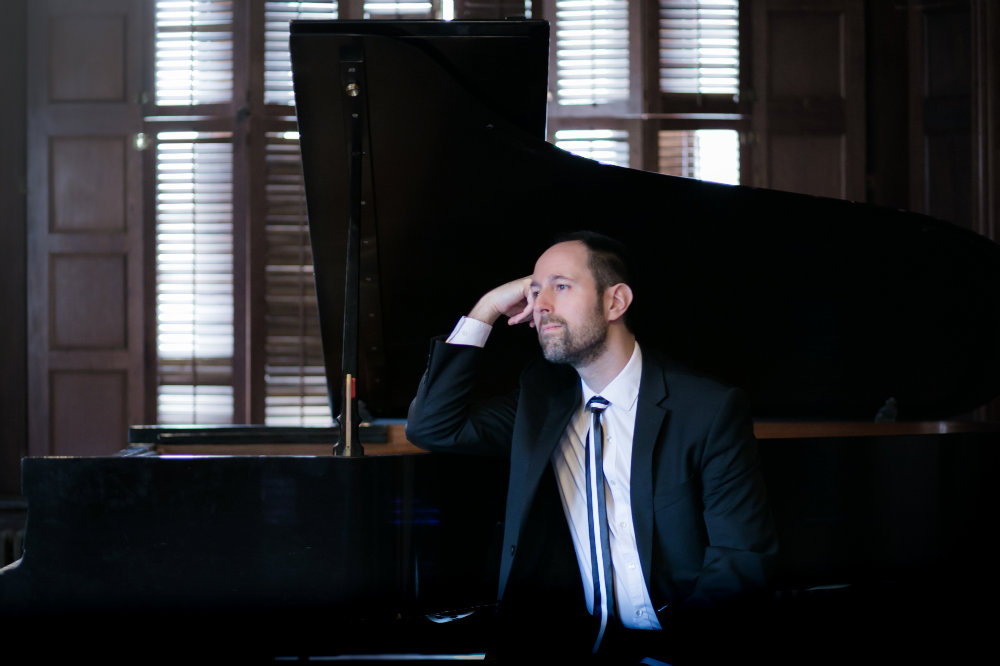by Jarrett Hoffman

This year they turn their attention to Beethoven’s Op. 16 in E-flat. It’s most often played by a quintet of piano and winds but will be performed here in its quartet version for piano and strings. The Miami will open the program on Wednesday, July 10 at 7:30 pm in Ludwig Recital Hall at Kent State with Haydn’s Quartet No. 64 in D, “Largo,” and they’ll conclude the evening with Bruch’s Quartet No. 1 in c. Tickets are available here.
Myer, the Gold Medalist in the 2008 New Orleans International Piano Competition, had just finished up a trip to the gym when I reached him by telephone. His coaching duties at Kent Blossom weren’t set to begin for over a week, but he was already in town, having taught at the Cleveland Institute of Music’s Summer Sonata program.
Jarrett Hoffman: First of all, congratulations on your recent album of Debussy’s Cello Sonata and Brahms’ Clarinet Trio with Brian Thornton and Afendi Yusuf. It’s a beautiful recording.
Spencer Myer: Thank you — I’m totally thrilled with how that turned out. It was really amazing to play with those two.
JH: Here you’re playing Beethoven’s Opus 16, which is better known in its version for piano and winds.
SM: That’s the original version, but this is a rare case where the composer himself did the arrangement, so obviously it had Beethoven’s blessing. I like both versions equally — I think I actually coached the wind version one year at Kent Blossom. I’ve heard the piece many times, but this is going to be my first time actually playing it, so I was really excited when [Miami Quartet cellist] Keith Robinson asked to do it.
It’s just terrific, and very much worth hearing in the string version. It’s youthful Beethoven, so it has wonderful material and beautiful melodies but also that kind of Classicism. What I love about Beethoven is that even in the earliest works that sound somewhat like Mozart, you still get the thickness and the Romanticism that you look forward to in his later works. Of course he was the composer who really bridged the gap between Classical and Romantic.
JH: When we talked last year, you told me that for you, playing with a string quartet is like playing with a smaller version of an orchestra. This piece has been described in a similar way, and maybe it’s worth noting that Beethoven wrote lots of orchestral music before this. Do you see it that way?
SM: Definitely, especially how much he utilizes different textures throughout the piece. It has this adagio opening that’s very extensive and uses a lot of the instruments in unison, and then the more conversational chamber stuff happens once the fast section begins.
JH: I love that main theme at the beginning of the allegro. That’s when I always remember I know this piece.
SM: Yes, exactly (laughs).
JH: Are there any moments of the piece or aspects of the piano part that you’d like to highlight?
SM: From what I’ve found, the piano part is similar to a lot of the early Beethoven piano sonatas in that it has a transparent, kind of Classical texture, but it’s still big writing. It takes a lot of refinement, but it’s definitely not the same kind of refinement as Mozart.
JH: That difference between Mozart and Beethoven is interesting — could you say more about that?
SM: The scale passages are what stick out most to me. In Mozart they can be at some points very exciting, of course, but generally very elegant. Beethoven makes much more in-your-face gestures. He crams a lot more notes into a small amount of time. I don’t want to call it virtuoso, but there’s definitely a much more virtuoso feel — bigger and thicker in terms of the textures in the piano.
JH: We talked about your recent album with Brian Thornton and Afendi Yusuf. Is there anything else in the recent past or on the horizon that people should know about?
SM: One of the more significant things is that I’m coming back in the fall to sub for Peter Takács at Oberlin. He was my teacher there, and I’ll be filling in for him while he’s on sabbatical. So I’ll be doing my performance schedule, my two days a week at the Longy School of Music in Boston, and then two days a week at Oberlin. It’s going to be a very busy fall, but I’m looking forward to it a lot. Being back at Oberlin and teaching the students — it will be terrific.
One other thing: in that same session with Brian for the Debussy and Brahms album, we also recorded the complete cello works of Schumann, and that CD is going to be coming out very soon actually. It just came off the printers.
JH: Fantastic, we’ll be on the lookout for that. Thanks for your time, and we’re looking forward to hearing you again with the Miami.
Published on ClevelandClassical.com July 3, 2019.
Click here for a printable copy of this article



